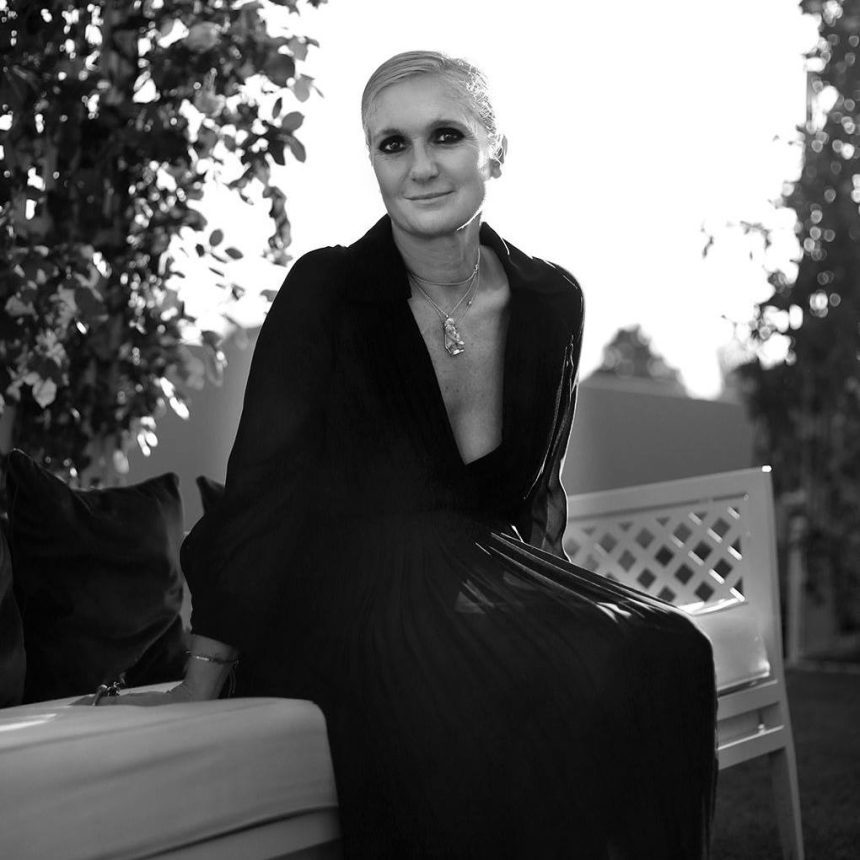When Maria Grazia Chiuri took the helm of the historic house of Dior in 2016, she became the first female artistic director of the brand in its 70-year history. From her very first collection, it was clear that she would not limit herself to redefining the house’s aesthetic – she wanted to open a dialogue about gender, female identity, and feminism through fashion.
“We Should All Be Feminists” — Fashion as a Message
Her first ready-to-wear show for Dior (Spring/Summer 2017) ended with a white T-shirt bearing the slogan “We Should All Be Feminists” , borrowed from Chimamanda Ngozi Adichie’s essay of the same name. The image went viral around the world – not just for its political overtones, but because it captured Chiuri’s vision : fashion is not just about aesthetics, it is also a tool for awakening. This T-shirt was not a stylistic fashion statement, but a cultural statement . It was an invitation to discuss the role of women today, not only within the fashion industry but also in society at large.
The art and legacy of feminism on the catwalks
In many of her collections, Chiuri collaborated with feminist artists and theorists. She brought in works by Judy Chicago, Claire Fontaine, and other artists who explored the female experience. At each show, the stage installation was not just decor – it was a cultural and ideological statement . For example, in the Spring/Summer 2020 collection, the set was adorned with the phrase “What if Women Ruled the World?” , while at the 2020 Haute Couture show in Paris, the space was filled with banners that projected feminist messages with gold threads – a conscious connection of “feminine” manual art with the high cultural level of fashion.
Women’s empowerment as an act inside and outside the studio
Chiuri does not limit herself to theoretical or symbolic movements. She actively supports women’s cooperatives and traditional artisans around the world, collaborating with them to create unique pieces, from hand-embroidered fabrics to traditional motifs. Through this strategy, she offers economic empowerment to women working in traditional societies, where independence is not a given.
Feminist Dior in Rome – The culmination of a movement
Dior’s recent show in Rome, inspired by mythology, ancient art, and Italian drama, was a theatrical celebration of feminine divinity . Chiuri came full circle, redefining the concept of female power not as a martial stance, but as an intellectual, cultural, and artistic supremacy .
Conclusion: Fashion that Talks, Fashion that Acts
Maria Grazia Chiuri has managed to give fashion a voice – and that voice speaks the language of feminism, equality and empowerment . She didn’t just create beautiful dresses; she created a dialogue. Through Dior, she transformed the catwalk into a cultural platform and proved that a woman at the helm of such a historic house can change not only fashion, but also social consciousness.











